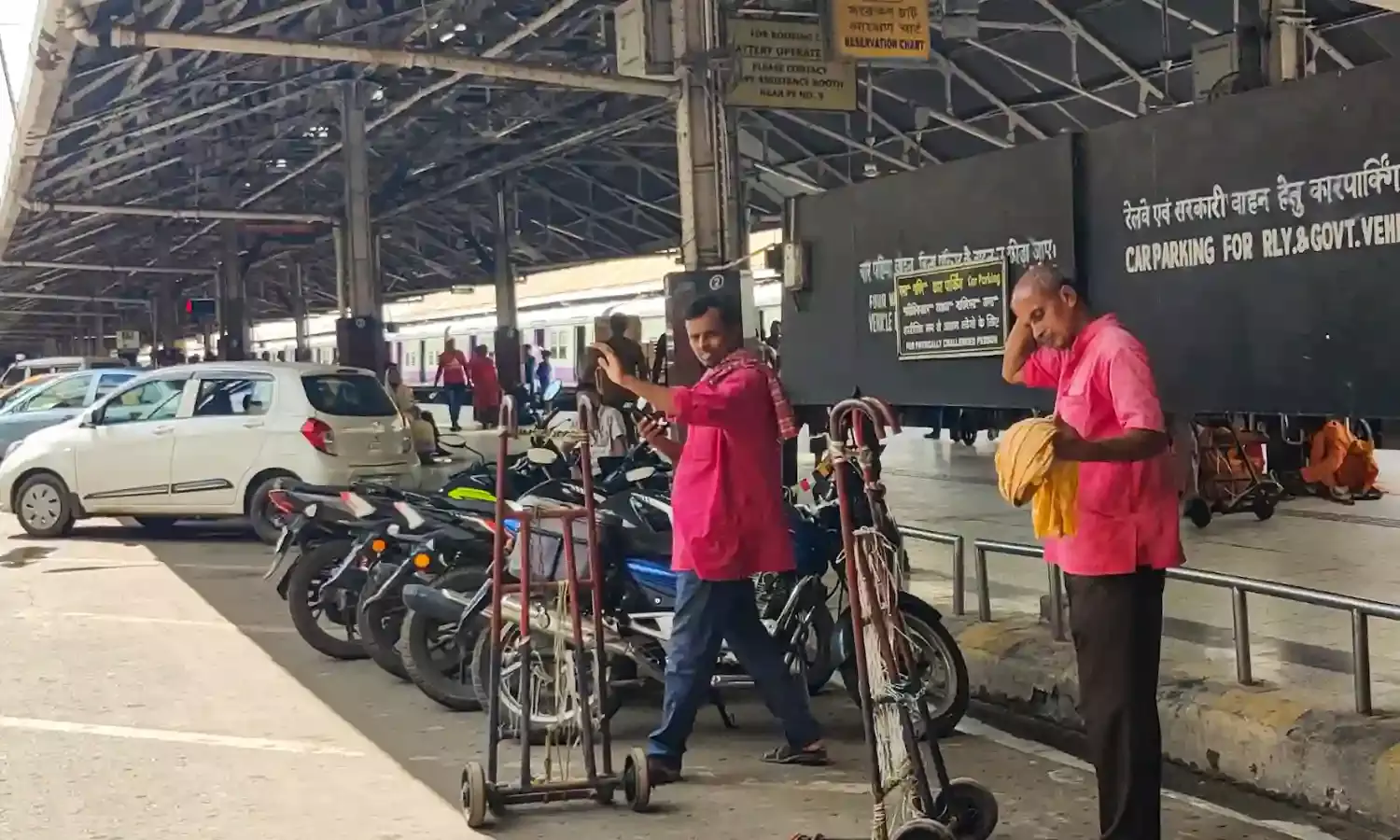The Daily Burden They Carry
Nearly 20,000 coolies pay to work

"Jobless and penniless. I come to the station hoping to get work but the trains go by and I spend the entire day sleeping. At night I pull a rickshaw to provide for my family," said Ramakant (34). He works as a full day sahayak also known as a coolie-worker, at Howrah railway junction. He, like the other sahayaks, wears a bright red shirt and copper armband, and his eyes well up with tears when he speaks of his daily struggles.
Since the outbreak of the second Covid wave,the coolies who work at Howrah railway station struggled to make ends meet. While the trains had shut down during the lockdown, their incomes have continued to spiral downwards even after the restrictions were lifted. The aftermath of Covid pandemic lockdown seems to be worse than the virus itself. This is especially true for daily wage earners whose livelihoods are not guaranteed in any way.
Sharing his ordeal, Faizal (50), another coolie at Howrah railway junction expresses said, "there are approximately 200 to 300 coolies working at the old and newer stations combined. We are slotted into two shifts. First shift has about 175 coolies, but these days work is less as the passengers avoid taking our service due to fear of COVID-19."
Though the situation has changed a bit after the lockdown restrictions were eased, newer infrastructure facilities for rail passengers have greatly reduced dependence on these porters. Passengers now use wheeled suitcases, and the escalators at stations, most simply ignore the coolies' calls.
Earlier long haul railway commutes made the passengers carry their own rolled bundles of bedding. Once at the platform, the coolie would step in, to carry the load, and earn his wage. Now most trains have bedding supplied by the Indian Railways. This too has taken away the coolies' chance to make the money that was once assured.Many coolies are now leaving the city or switching jobs, "this adverse situation is forcing us to do other work to run the house," added Faizal.
According to some statistics, there are nearly 20,000 coolies working across India, who are not employees of the Indian Railways. Their employment depends on the payment of an annual licence fee and they draw no salary from the government. The demands of these porters revolve crucially around job security and revisions to their wages.The Railways reviews their rate cards and has pegged prices at ₹60 for 40kg loads. However, this does not accurately reflect on-ground wage, What they get is dictated by demand and supply for their services across railway stations.
Talking about the difficulties they face, Dhananjay, another coolie, said he has to spend Rs. 150 on travelling to the Howrah station from his home in Shalika, about 20 kms away. "Due to the lack of work at the station, I also work as a labourer in a factory near my village as I am the only breadwinner for my family. My children are studying in Class 9 and 7 in a government school."
The coolies of Howrah station who used to earn Rs 500-800 daily before the pandemic said it has now become difficult to even earn Rs 200 in a day. After the government eased some restrictions, some of the trains like Shramik Special trains started to run. That is what helps the coolies to earn Rs. 100-200 as daily wages.
Advocate K.A. Bhattacharya, an expert in Labour, Civil, and Criminal Laws explained, "there is no specific law or act to protect the coolies or porters working at railway stations." He added, "our laws are meant for the welfare of the society. Everyone should be considered and protected under the court of law. Just like the hawkers act is enacted upon, soon, a coolies act should be made for their protection in an unprecedented situation like this."
"I have borrowed money from my relatives to buy ration and other household essentials for my family. Many times we had to just chutney roti, said Dhananjay adding "the trains have started to run again, we are back at work. But the money we are earning now is comparatively less than what we used to before the pandemic. But it has made our situation a bit better than it was during the lockdown."
Now the coolies of Howrah Railway Junction are hoping for a revival of the good days and they live in the hope that soon footfall of the passengers will increase.



